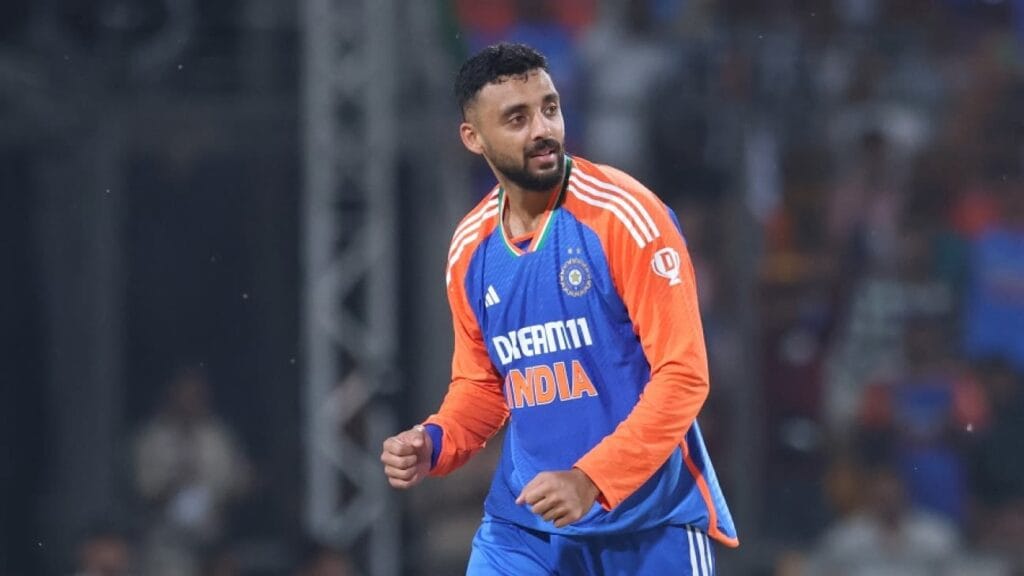India is set to host the next iteration of the T20 World Cup in 2026. India will assume the responsibility of being both the defending champions and the host nation for the next World Cup, which inarguably makes them one of the hot favorites to win the World Cup. The recent announcement of India’s side for the Asia Cup gives us a sneak peek into their strategy for the coming World Cup in home conditions.
The game of T20 cricket is a constantly evolving beast, being influenced by trends across both international cricket and franchise cricket around the world. This has evolved the game in a way that T20 cricket has emboldened players to hit more boundaries through their innings, not putting a large price on their wicket and transitioning from playing anchor innings to more of a role player in the team.
India’s squad for the Asia Cup: Surya Kumar Yadav (C), Shubman Gill (VC), Abhishek Sharma, Tilak Varma, Hardik Pandya, Shivam Dube, Axar Patel, Jitesh Sharma (WK), Jasprit Bumrah, Arshdeep Singh, Varun Chakaravarthy, Kuldeep Yadav, Sanju Samson (WK), Harshit Rana, and Rinku Singh.
The start of the post-Virat-Rohit era
The 2026 World Cup will be the first ICC tournament that India will play without Rohit Sharma and Virat Kohli in the squad. These two have been stalwarts of the Indian white-ball side, and without them, we are already seeing how the Indian side has evolved as a T20 side. India used to be notoriously slow in the power play over until the T20 World Cup in 2022, after which the team helmed by Rohit Sharma started to make a change in their outlook towards T20 cricket.
Influenced by the IPL and Rohit Sharma at the top, India also integrated themselves into a team consisting of role players and prioritized boundary hitting, which ultimately brought returns for them when they won the 2024 T20 World Cup and secured an ICC title after 11 years. While Rohit transformed himself into a boundary-hitting behemoth in the opening position, Kohli remained an anchor-type batter through the middle of the innings and accelerated towards the end.
The current Indian side has batting upto number 8 with lower-order finishers and all-rounders who extend their batting lineup in the likes of Axar Patel, Rinku Singh, Hardik Pandya, Shivam Dube and Jitesh Sharma, who can employ death overs boundary hitting to boost the score in the death overs. The depth in batting helps the top and middle order to play freely at their own place and take the bowlers on during the powerplay and the middle overs.
The top order and the middle order, consisting of the likes of Abhishek Sharma, Suryakumar Yadav, Shubman Gill, Sanju Samson, and Tilak Yadav, are freer to hit more boundaries and put less of a price on their wicket. The longer batting order also gives the top-order players more freedom not to slow down in the middle overs of the T20 innings and keep hitting boundaries and keeping the run rate around 10 an over even in the case of a collapse.
The bowling department

India suffers from no lack in their strike bowling department with the likes of Arshdeep Singh, Jasprit Bumrah, Varun Chakravarty and Kuldeep Yadav in their ranks. With the UAE hosting the Asia Cup and the T20 World Cup being hosted in combination by India and Sri Lanka, India can expect spin-friendly tracks that are slow and gripping, leaving enough room for Kuldeep and Chakravarty to shine.
India only suffers in one aspect: they do not have bowlers who can hit sixes in the death. While other teams have bowlers such as Cummins or Jofra Archer, India’s bowlers do not have as much boundary-hitting capacity as would be optimal for T20 sides. They also have a no. 8 problem, which they hope Harshit Rana can cover, who can both score important runs at the death and bowl his full quota of overs.
The future of the Indian Team
The Indian team has also lost out on the talent of Ravi Jadeja, with his exceptionally tight bowling, death-overs hitting and mercurial fielding. Axar Patel will be looking to now fill that gap more completely, with other spinning all-rounders waiting in the rafters, such as Krunal Pandya or Vipraj Nigam.
The Asia Cup is going to be the litmus test for how this team fares, with a lot of talent sitting on the bench, such as Yashasvi Jaiswal, Riyan Parag or Nitish Kumar Reddy. The likes of batters such as KL Rahul or Ruturaj Gaikwad are also waiting to break into the side. Fresh talent such as Priyansh Arya, Prabhsimran Singh or even players wanting to get back in the team, such as Ravi Bishnoi or Yuzi Chahal, are always looking for any opportunities to break down the door when it comes to the national side.
The results of the Asia Cup will help India settle on a national side that they can reliably take to the T20 World Cup and what changes they need to make to their squad composition or their playstyle to successfully defend the World Cup at home.


[…] the IPL 2025 auction, an important event for team-building, franchises have to be more cautious with money […]
[…] India only winning 5 out of the 15 tests played in this period. While it is a side in transition, India has suffered a whitewash at home against New Zealand, tarnishing an unblemished 12-year-long home […]
[…] conclusion, India’s comprehensive victory over the UAE in the Asia Cup 2025 opener reaffirms their status as favorites. With a blend of youth and experience, they look […]
[…] the Asia Cup has rotated between ODI and T20 formats depending on the upcoming major global tournaments; with […]